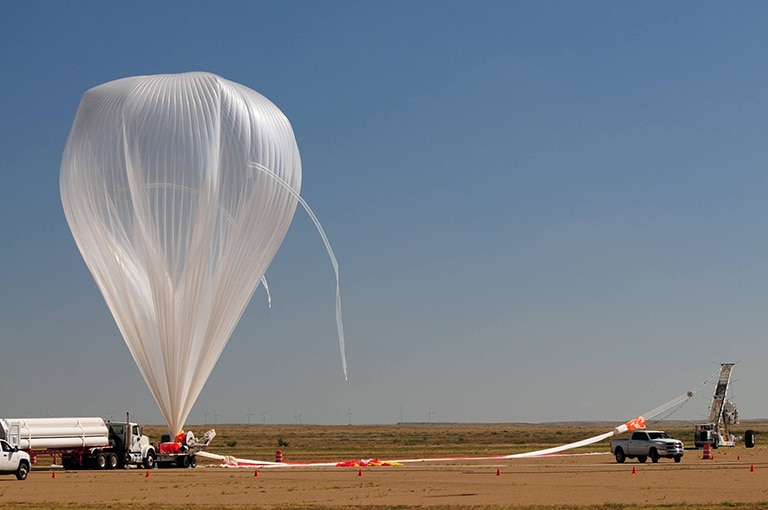By Dr. Rachel Smolker
Hydroxyl (OH) is a simple, very short lived but “radical” marriage of one hydrogen and one oxygen molecule. Being “radical” means that it reacts very readily with other chemicals, being an important agent of change. Hydroxyl radicals are referred to as an atmospheric “detergent” because they play a key role in oxidizing, and thereby decomposing various air pollutants, including carbon monoxide, sulphur dioxide, and methane. OH chemistry is closely associated with ozone dynamics – since most OH is formed from UV mediated breakdown of ozone.
A study just published in July 2017 looked at the impact of stratospheric aerosol injection of sulfate particles (SAI), a proposed “solar radiation management” (SRM) approach to geoengineering, on methane. OH converts methane into water and CO2, over time. The longevity, and in turn the concentration of methane in the atmosphere therefore depends in large part on the concentration of OH.[1]
What they found (using models) is that sulfate aerosol injection would have several effects – on planetary albedo, on UV scattering and on circulation of air and sulfate particles between layers of the atmosphere. The two models used by the researchers suggest that those impacts, taken together these would result in an increased longevity of methane by as much as 16% – which would mean 16%more methane in the atmosphere at any one time. This would greatly exacerbate (“force”) warming.[2]
The idea of using SAI has been bandied about for over a decade. David Keith, one of the most avid proponents recently opened a laboratory at Harvard University, with grants from the Gates Foundation and others. This is one of several new academic institutes that have taken up research on geoengineering with grant moneys flowing. The Royal Society and National Academies, among others have written assessments, and reports and debates are increasingly, and disturbingly, more commonplace. Keith and colleagues have announced plans for an open-air experiment in the southwestern USA in 2018.
So how is it, that all of these academics, and all the king’s men have not taken into consideration the impacts of SAI on OH breakdown of methane, until now? My long-time colleague and codirector of Biofuelwatch, Almuth Ernsting, has no Ph.D. in, or formal training in atmospheric chemistry. But she has long been wondering about that possibility. She first learned the importance of hydroxyl in the atmosphere from reading a 2006 book by Fred Pearce, which included a chapter on hydroxyl (“The Last Generation”). Later, in 2011, while participating in a Convention on Biological Diversity civil society meeting on climate geoengineering, attended by various “experts” on geoengineering, Almuth raised the question about how injection of sulfate aerosols might impact OH behavior, but no answer was offered.
The fact that the vitally important question whether SAI might impact on the lifespan and thus the concentration of methane in the atmosphere was never publicly asked or acknowledged by geoengineering advocates until now, is deeply troubling. OH is not something totally new. It has long been known as a factor in atmospheric chemistry, discussed in the IPCC climate science reports for over a decade. The potential for SAI to cause ozone depletion, (which is mediated by OH), was identified, but nothing appears to have ever been written about the potential effects on methane.
Surely, anyone seriously contemplating the injection of massive quantities of sulfur into the stratosphere SHOULD have taken careful consideration of the impact that doing so would have on all of the OH–mediated chemical reactions, including methane.
This apparent oversight could be viewed as a textbook example of how a severely narrow, reductionist engineering world view fails us. The complex interdependence of multiple, ever-changing, physical and chemical factors that results in our life-supporting atmosphere is not amenable to understanding in linear, binary, widget-tweaking terms. We can at least hope that it was in fact an “oversight” and not deliberate shrouding of the issue: potentially the impacts on methane longevity could entirely offset any purported cooling from SAI – or worse. One methane molecule is estimated to cause 28 times as much warming over a century as one CO2 molecule. This new “risk” thus utterly undermines proclamations (grants, careers and all) of its’ effectiveness as a means of cooling.
Had SAI already been deployed, we might now be learning the hard way via experience about OH/methane interactions. Or even worse, even if the effects were exactly as predicted by the models used in the recent study, there would be so many other possible reasons for rising methane levels that it could still be difficult to prove the link to SAI. Fortunately, with a de-facto moratorium on geoengineering, (via the Convention on Biological Diversity), widespread deep public skepticism towards climate geoengineering in general, and serious concerns about governance, we have not gone down that road yet. Many are banging the geoengineering drums with increasing persistence however, calling for “desperate measures” as the climate heats up.
This study is an important wake up call. Several prior studies indicated that SAI would be problematic for various reasons – from regional impacts on rainfall and weather, to impacts on ozone. This latest study provides a compelling reason to steer entirely clear of SRM. Virtually all climate geoengineering technofixes that are under consideration not only distract from the urgency of immediate emissions reductions – but also it is clear that they simply won’t work! In fact, deploying any of the proposed geoengineering techniques is likely to only make matters worse. As we race headlong into climate chaos and face calls for desperate measures, this would be a key point to keep in mind!
[1] OH also plays a key role in sulfur chemistry in the atmosphere. See for example: http://www.nature.com/articles/284330a0
[2] Visioni, D., Pitari, G., Aquila, V., Times, S., Cionni, I., Genova, G. and Mancini, E. 2017. Sulfate goengineering impact on methane transport and longevity: results from the Geoengineering Model Intercomparison Project.(GeoMIP). Atmos. Chem. Phys., 17: 11209-11226




